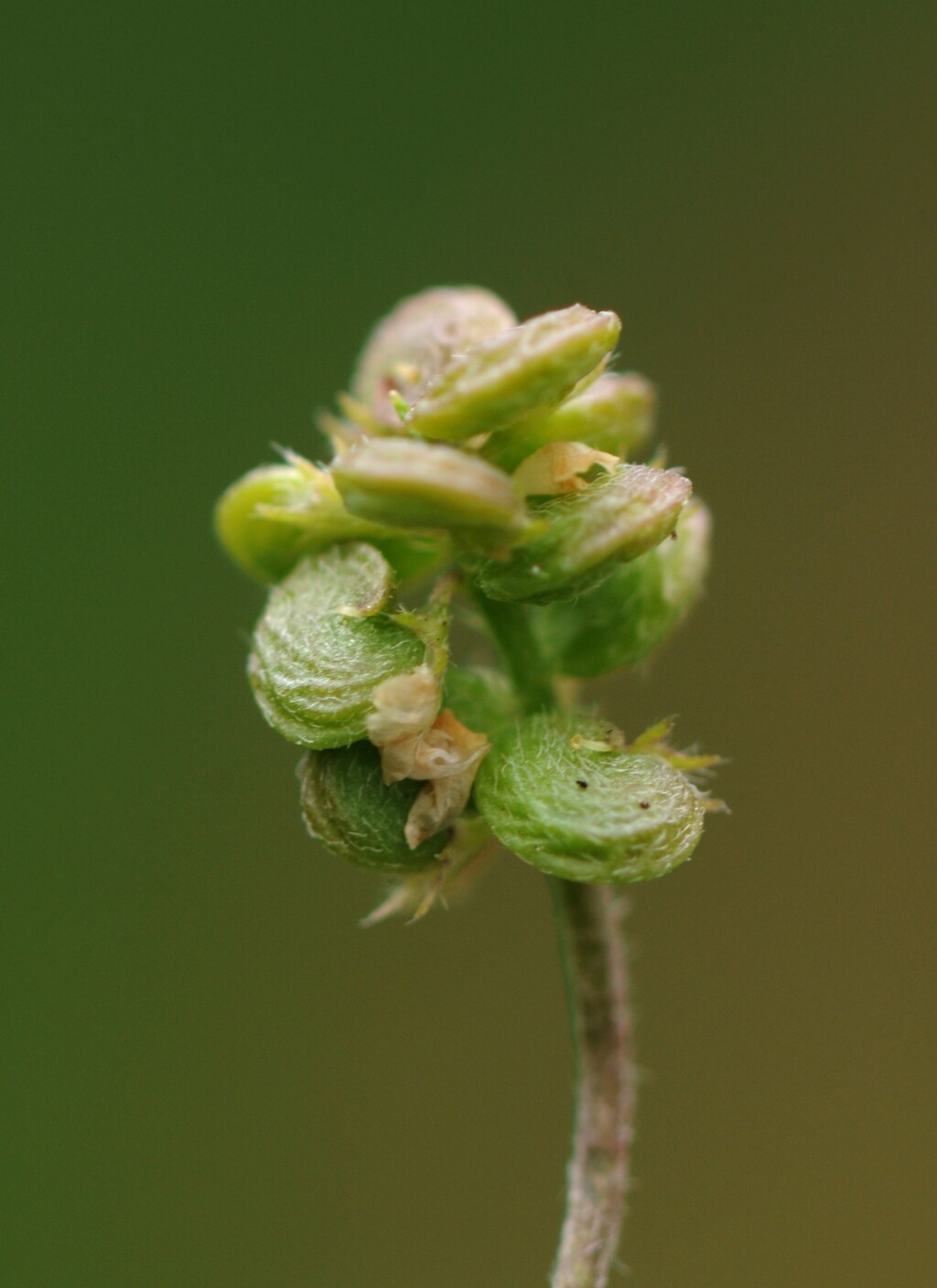Medicago
Annual or perennial herbs, rarely shrubs. Leaves alternate, pinnately trifoliolate; petiolate; stipules adnate to petiole. Inflorescence axillary, pedunculate; rachis often terminating in a short cusp or awn; flowers solitary or few–many in racemes, equipped with an explosive tripping mechanism for pollination; pedicels short; bracts small, persistent; bracteoles absent. Calyx campanulate, teeth 5, equal or subequal; corolla not persistent, yellow or rarely purple; standard obovate, longest; wings and keel obtuse; stamens diadelphous, 9 united by their filaments around the ovary, the tenth free and facing the standard, filaments not dilated, anthers uniform; ovary sessile or shortly stipitate, ovules 1–many, style filiform, glabrous, stigma capitate. Pod exceeding calyx, tightly coiled or rarely reniform or falcate, indehiscent, spiny, tuberculate or smooth, glabrous or hairy; seeds reniform, 1–many, smooth or tuberculate, lacking a conspicuous aril.
About 85 species, from temperate Europe, the Mediterranean, northern Africa, the Middle East and China; c. 15 species in Australia (all naturalised).
Jeanes, J.A. (1996). Fabaceae. In: Walsh, N.G.; Entwisle, T.J., Flora of Victoria Vol. 3, Dicotyledons Winteraceae to Myrtaceae, pp. 663–829. Inkata Press, Melbourne.
 Spinning
Spinning


